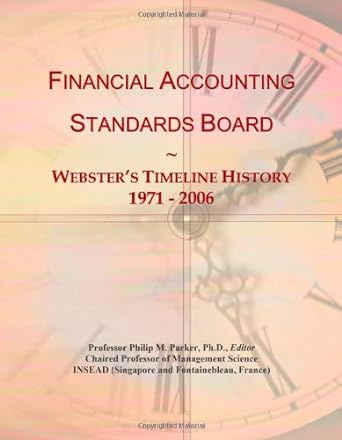Question
nterpreting Accounts Receivable and Its Footnote Disclosure Following is the current asset section from the W.W. Grainger, Inc., balance sheet. As of December 31 ($
nterpreting Accounts Receivable and Its Footnote Disclosure Following is the current asset section from the W.W. Grainger, Inc., balance sheet.
| As of December 31 ($ 000s) | 2005 | 2004 | 2003 |
|---|---|---|---|
| Cash and cash equivalents | $ 544,894 | $ 429,246 | $ 402,824 |
| Accounts receivable (less allowances for doubtful accounts of $18,401, $23,375 and $24,736, respectively | 518,625 | 480,893 | 431,896 |
| Inventories, net | 791,212 | 700,559 | 661,247 |
| Prepaid expenses and other assets | 54,334 | 47,086 | 37,947 |
| Deferred income taxes | 88,803 | 96,929 | 99,499 |
| Prepaid income taxes | -- | -- | -- |
| Total current assets | $ 1,997,868 | $ 1,754,713 | $ 1,633,413 |
Grainger reports the following footnote relating to its receivables. Allowance for Doubtful Accounts: The following table shows the activity in the allowance for doubtful accounts.
| For Years ended December 31 ($ 000s) | 2005 | 2004 | 2003 |
|---|---|---|---|
| Allowance for doubtful accounts- accounts receivable | |||
| Balance at beginning of period | $ 23,375 | $ 24,736 | $ 26,868 |
| Provision for uncollectable accounts | 1,326 | 5,159 | 9,263 |
| Write-off of uncollectible accounts, less recoveries | (6,380) | (6,662) | (11,713) |
| Foreign currency exchange impact | 80 | 142 | 318 |
| Balance at end of period | $ 18,401 | $ 23,375 | $ 24,736 |
(a) What amount do customers owe Grainger at each of the year-ends 2003 through 2005?
| ($ 000s) | 2005 | 2004 | 2003 |
|---|---|---|---|
| Gross accounts receivable | $Answer
| $Answer
| $Answer
|
(b) What percentage of its total accounts receivable does Grainger feel are uncollectible? Hint: Percentage of uncollectible accounts = Allowance for uncollectible accounts/Gross accounts receivable. Round your answers to two decimal places.
| ($ 000s) | 2005 | 2004 | 2003 |
|---|---|---|---|
| Percentage of uncollectible accounts to gross accounts receivable | Answer % | Answer % | Answer % |
(c) What amount of bad debts expense did Grainger report in its income statement for each of the years 2003 through 2005?
| ($ 000s) | 2005 | 2004 | 2003 |
|---|---|---|---|
| Bad debts expense (titled Provision for Uncollectible Accounts) | $Answer
| $Answer
| $Answer
|
(d) Since 2003, did the allowance for uncollectible accounts increase or decrease as a percentage of gross accounts receivable?
The allowance for uncollectible accounts remained relatively the same as a percentage of gross accounts receivable.
The allowance for uncollectible accounts has decreased as a percentage of gross accounts receivable.
The allowance for uncollectible accounts has increased as a percentage of gross accounts receivable.
1.00 points out of 1.00
(e) If Grainger had kept its 2005 allowance for uncollectible accounts at the same percentage of gross accounts receivable as it was in 2003, by what amount would its profit have changed (ignore taxes)? HINT: Use rounded answer from part b to calculate. Round answer to the nearest thousands. Profit would Answerincreasedecrease
by $Answer
($ 000s) (f) Which of the following statements about Grainger's allowance for uncollectible accounts and the related bad debts expense is false?
Since 2003, Grainger has decreased its allowance for uncollectible accounts as a percentage of gross receivables.
Since 2003 Grainger has decreased it allowance for uncollectible accounts by decreasing its write-offs.
Grainger's current allowance account appears adequate since it is nearly three times the level of current-year write-offs.
Since 2003, Grainger has decreased its bad debts expense.
Step by Step Solution
There are 3 Steps involved in it
Step: 1

Get Instant Access to Expert-Tailored Solutions
See step-by-step solutions with expert insights and AI powered tools for academic success
Step: 2

Step: 3

Ace Your Homework with AI
Get the answers you need in no time with our AI-driven, step-by-step assistance
Get Started


